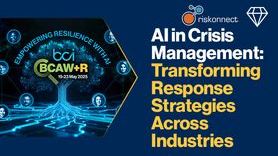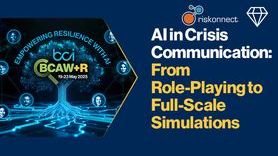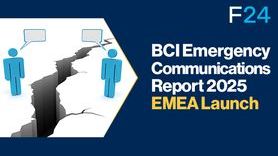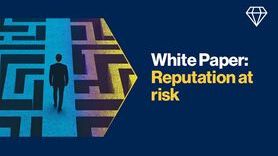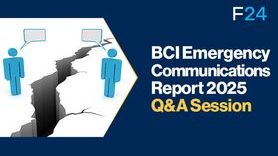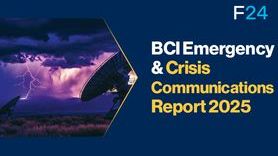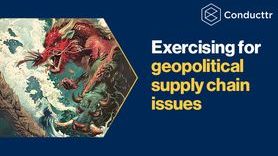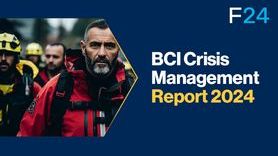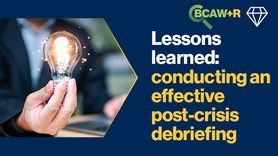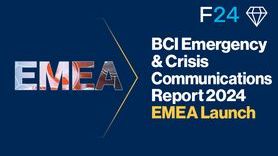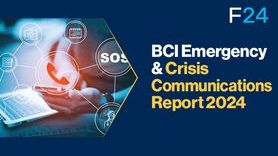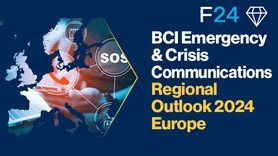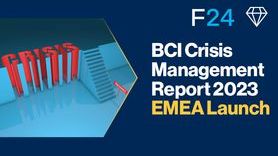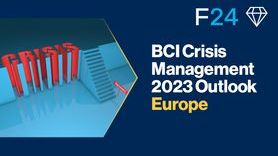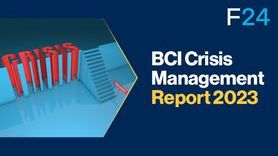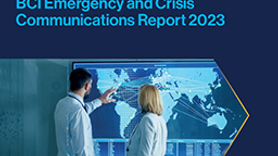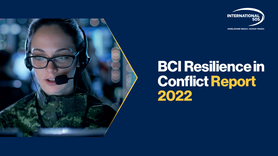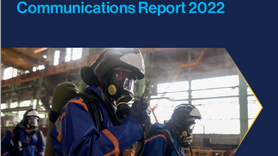What can we learn from the Ever Given fiasco?
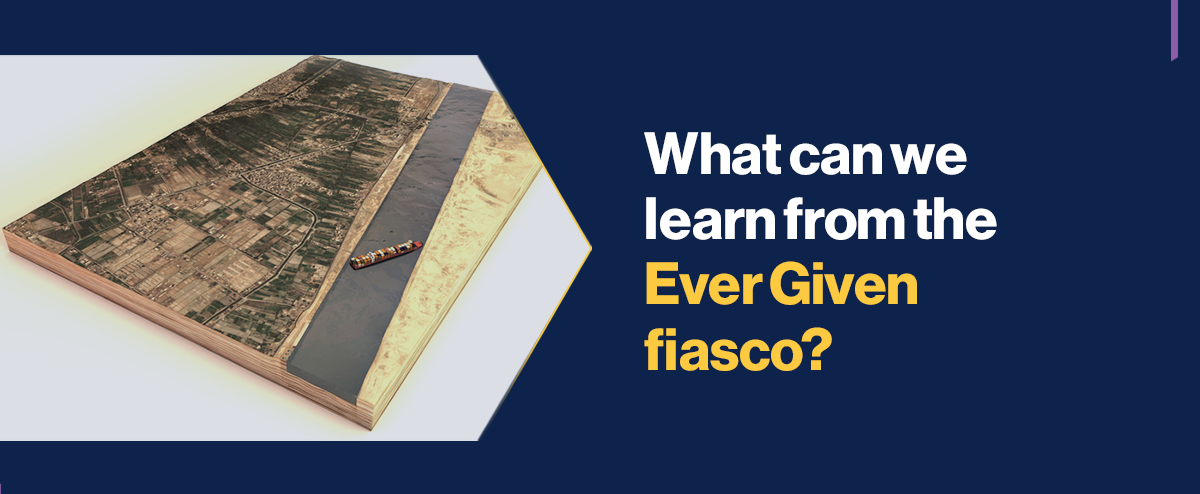
What are the takeaways from the Ever Given Suez Canal crisis? Can it teach us anything new about risk management?
The super-ship has been pulled free from the Egyptian desert sands, but the economic fallout was huge. We saw a surge in oil prices and there was about £7bn worth of goods locked up in ships that couldn’t move. Other firms sent their vessels on a detour around the Cape of Good Hope at extreme expense in time and fuel. Frankly, it was a mess.
The internet is rarely slow to catch the public mood and while the ship’s owners and insurers may have been panicking, the natural instinct on Twitter was to raise a laugh. A whole slew of memes appeared making fun of the event. It was too reminiscent of a bone-headed driver trying to make an impossible three-point turn and getting stuck in the process. The cause was simple to understand, but the fallout was anything but with massively complex supply chains and global trade networks interrupted for more than a week.
Super-ships
Cargo ships have soared in size during the last ten years. At the turn of the century a typical vessel carried 5,000 containers; these super-ships now carry 20,000 or more. They generate good economies of scale for their owners but at very high risk.
Commenting, Rory Hopcraft from Plymouth University said: “The ships are not just larger; they’re carrying more goods. So rather than spreading the risks over three or four smaller ships, all your eggs are in one basket – it’s all tied up in one big ship.”
These swollen ships also come with other consequences. There are very few ports that have the capacity to handle them which means if one of them gets in trouble there are limited places where they can seek refuge and repairs.
Hopcroft again: “If those terminals that can (take these ships), aren’t able to service them for whatever reason – local power cuts or military action – then these ships can’t be serviced at all.”
Economies of scale
The bigger ships also represent huge challenges when it comes to salvage. Larger tugboats and dredgers are required and there was even a point when it looked like mobile cranes and helicopters were needed to remove containers to lighten the load. In the end a high tide, dredging and tugging did the job.
For the Egyptian government, the Suez Canal is an extremely important source of revenue with ships charged many thousands of pounds for a passage through the canal. The cost can range widely depending on the type of vessel, tonnage and whether they are laden or not. As already mentioned, operators run these massive ships because of economies of scale. The risks must have been identified by the Suez Canal authorities and by the vessel owners, but the financial imperatives seem to outweigh the risks in the minds of all parties involved. Money is the driver.
What caused the crash?
There has been a great deal of speculation as to why the accident happened.
The ship’s Voyage Data Recorder (equivalent to a plane’s black box) has been handed over to the International Maritime Organisation which has started an investigation. In Egypt, the Suez Canal Authority is also setting up an enquiry.
Initially the shipping agent GAG Egypt suggested the vessel had suffered a catastrophic power failure. That suggestion has subsequently been removed from their website.
The ship's technical manager Bernhard Schulte said: “initial investigations rule out any mechanical or engine failure as a cause of the grounding”. So, a power cut seems unlikely.
High winds have been widely touted as the possible cause. Reuters news agency reported the leasing company saying the ship “was suspected of being hit by a sudden strong wind, causing the hull to deviate from (the) waterway and accidentally hit the bottom.” Sporadic dust storms and high winds are common in the desert at this time of year, but could they really push a ship of this size and weight off course?
Others are suggesting that it might have been a technical error on the part of the crew that caused the crash. Lieutenant General Osama Rabie, chair of the Suez Canal Authority said: “Strong winds and weather factors were not the main reasons for the ship's grounding - there may have been technical or human errors.” The general seems to be equivocating somewhat as he only says there ‘may’ have been human errors. All very confusing.
Inevitably, there are insinuations on the internet that it could have been grounded deliberately, though currently there is no evidence to suggest that is the case.
Lloyd’s List are warning that marine insurers are bracing for a massive influx of claims. Who or what was to blame will likely have costly implications for those involved.
Lack of imagination
There is always an appetite to learn from crises to make sure that something similar never happens again. This could be a tough call in this instance. Although nothing to do with terrorism it’s worth noting that the report into the 9/11 attacks found that a lack of imagination allowed the terrorists to carry out the most lethal terror atrocity in history. The skies above the US even prior to 9/11 were thought to be some of the most secure in the world. Security was baked into their systems. What they hadn’t banked on were desperate men, armed with knives who came with a few hours flying lessons and a willingness to die.
A lack of imagination can hardly be blamed for the Suez foul-up. The ship is as long as a skyscraper, something akin to the size of the Empire State Building, and more importantly just a little longer than the Suez Canal is wide.
Eventually the cause of the accident will emerge from the various investigations. Whatever the result when you are dealing with a mega-ship sailing through a relatively narrow canal the risks are staring everyone in the face. Imagination can take a day off.
The Suez Canal which opened in 1869 was never designed for such vessels which at the time would have seemed like science fiction, perhaps something out of a Jules Verne novel. Whether there is an appetite to enlarge the canal or shrink the ships seems doubtful, but unless something changes this looks unlikely to be the last accident of its kind on one of the great waterways of the world.
About the author - Jim Preen:
In his role as crisis management director at YUDU Sentinel, Jim provides client specific advice on all aspects of communications, designs and delivers crisis simulation exercises, writes crisis communication plans and media trains senior executives. Formerly he was a journalist working at ABC News (US) where he covered stories including the Gulf War and the Bosnian conflict. He won two Emmys for his work.












